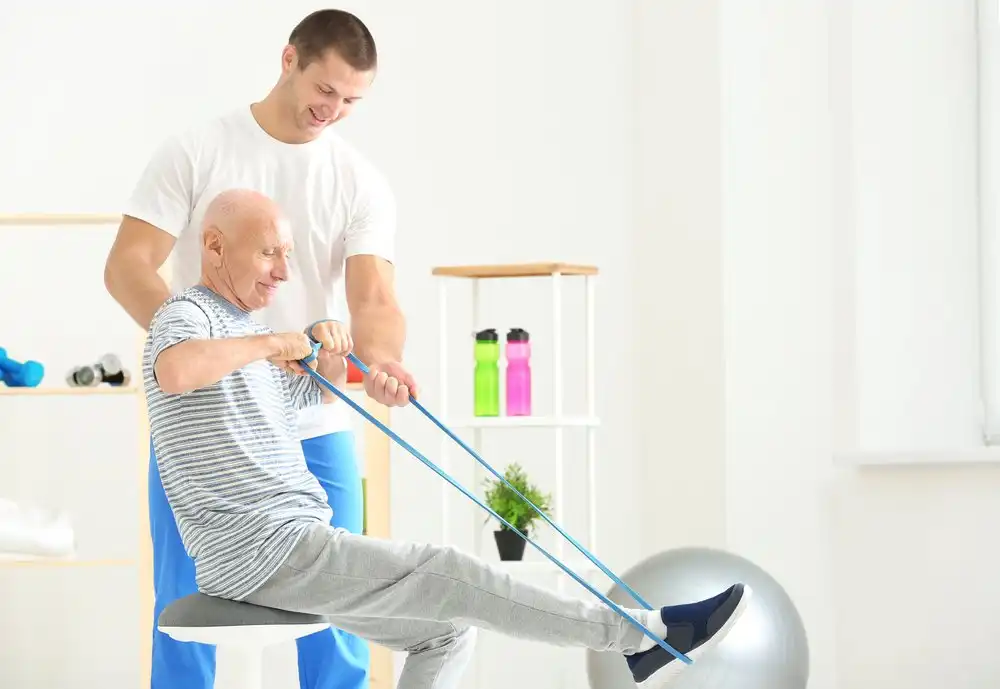
Top Exercises for Injury Recovery and Prevention at Home: A Physiotherapist’s Guide
Recovering from an injury or simply trying to prevent one? Home-based exercises can be a powerful tool in your journey to stay strong, flexible, and injury-free. Guided by principles of physiotherapy, these exercises can help alleviate pain, rebuild strength, and boost mobility. And the best part? You don’t need a gym or special equipment—just a bit of space, commitment, and the willingness to start.
In this guide, we’ll dive into top physiotherapy-recommended exercises for both injury recovery and prevention, detailing how to perform each movement safely and effectively.
The Importance of Injury Prevention and Recovery Exercises
Injury prevention and recovery go hand-in-hand. After an injury, the affected muscles, tendons, or joints often weaken, leading to limited movement, pain, and a higher risk of future injuries. Targeted exercises help you regain strength, restore range of motion, and support the healing process.
Even if you’re injury-free, preventive exercises can build resilience in your muscles and joints, making them more resistant to strains, sprains, and other common injuries. These exercises promote stability, balance, and strength, which are key to overall physical health.
Let’s get started with exercises you can incorporate into your home routine, divided into categories based on the body part they benefit most.
1. Lower Body Strength and Stability Exercises
Glute Bridges
The glute bridge is fantastic for strengthening the glutes, hamstrings, and lower back, all of which are essential for supporting hip and knee stability.
- How to Do It: Lie flat on your back, knees bent, and feet flat on the floor. Engage your core, then push through your heels to lift your hips off the floor, forming a straight line from your shoulders to your knees. Lower back down.
- Reps: Aim for 3 sets of 15 reps.
Clamshells
Clamshells are great for hip stabilization, and strengthening the gluteus medius, which plays a crucial role in pelvic stability.
- How to Do It: Lie on your side, knees bent at a 90-degree angle. Keeping your feet together, lift your top knee as high as you comfortably can without moving your pelvis. Lower it back down.
- Reps: 2 sets of 15 reps on each side.
Wall Sits
A great exercise for overall lower body endurance, wall sits work your quadriceps, glutes, and calves while improving your stability and control.
- How to Do It: Stand against a wall and slide down into a squat position, ensuring your thighs are parallel to the floor. Hold this position, keeping your back flat against the wall.
- Hold Time: Start with 30 seconds, working up to a minute as you progress.
2. Core and Back Exercises for Stability and Balance
Bird Dog
Bird Dog improves core stability and balance while gently activating the muscles in the lower back, making it ideal for injury prevention.
- How to Do It: Start on all fours, with wrists under shoulders and knees under hips. Extend your right arm forward and left leg backward, keeping your core engaged. Return to the starting position and switch sides.
- Reps: 2 sets of 10 reps on each side.
Plank Variations
Planks are excellent for core strength, providing stability for the entire body and helping prevent lower back injuries.
- How to Do It: Begin in a push-up position with your body forming a straight line from head to heels. Hold this position, keeping your core tight.
- Hold Time: Aim for 30-60 seconds.
If a full plank is too challenging, try a modified plank by resting on your knees.
Superman
This exercise strengthens the lower back muscles, which are essential for posture and injury prevention.
- How to Do It: Lie on your stomach with arms extended forward. Simultaneously lift your arms, chest, and legs off the floor, holding for a few seconds, then lower back down.
- Reps: 2 sets of 12 reps.
3. Upper Body Exercises for Strength and Flexibility
Wall Push-Ups
Wall push-ups are a gentle way to strengthen the chest, shoulders, and triceps without straining the wrists or lower back.
- How to Do It: Stand facing a wall, about an arm’s length away. Place your hands on the wall at shoulder height. Bend your elbows to bring your chest towards the wall, then push back.
- Reps: 3 sets of 10 reps.
Shoulder Blade Squeeze
The shoulder blade squeeze helps activate and strengthen the muscles around your upper back and shoulder blades, which improves posture.
- How to Do It: Sit or stand with your back straight. Squeeze your shoulder blades together, holding for a few seconds before releasing.
- Reps: 2 sets of 15 reps.
Resistance Band Rows
If you have a resistance band, this exercise helps build shoulder and back strength, both crucial for stability and posture.
- How to Do It: Anchor a resistance band at chest height, then grab each end. Pull the band towards you, keeping elbows close to your body and squeezing your shoulder blades together.
- Reps: 3 sets of 12 reps.


4. Flexibility and Mobility Exercises
Hamstring Stretch
Flexible hamstrings can reduce the risk of lower back strain and improve overall movement.
- How to Do It: Sit on the floor with one leg extended. Reach towards your toes, keeping your back straight. Hold for 20-30 seconds, then switch legs.
Cat-Cow Stretch
This classic stretch helps improve spinal flexibility, relieving tension in the back and neck.
- How to Do It: Begin on all fours. Arch your back (cow pose), then round it upwards (cat pose), moving fluidly between each position.
- Reps: Perform for 1-2 minutes.
Hip Flexor Stretch
Tight hip flexors can contribute to back pain, especially in those who sit frequently. Stretching them can alleviate stiffness and improve range of motion.
- How to Do It: Lunge forward with one leg, keeping the back leg extended behind you. Gently push your hips forward to stretch the hip flexor of the back leg. Hold, then switch sides.
5. Balance Exercises for Injury Prevention
Single-Leg Stance
This simple balance exercise can strengthen the ankles, hips, and core, improving stability and coordination.
- How to Do It: Stand on one leg, maintaining balance for as long as possible. Switch legs after each hold.
- Hold Time: Start with 20 seconds per leg, working up to a minute.
Heel-to-Toe Walk
Practicing balance with a heel-to-toe walk can reduce the risk of falls and improve coordination.
- How to Do It: Walk in a straight line, placing the heel of one foot directly in front of the toes of the other. Keep your balance as you move forward.
Standing Calf Raises
Calf raises help to strengthen your calves and improve ankle stability, which is essential for balance.
- How to Do It: Stand with feet hip-width apart. Raise up onto your toes, hold, then lower back down slowly.
- Reps: 2 sets of 15 reps.
Tips for Safe and Effective Exercise
Warm Up First: Always spend 5-10 minutes warming up your muscles with gentle movements to prevent injuries.
Listen to Your Body: Never push through sharp pain or discomfort. If you experience pain, stop the exercise and consult a physiotherapist.
Focus on Form: Proper form is essential for injury prevention. Move mindfully and avoid rushing through exercises.
Consistency Over Intensity: It’s better to perform exercises consistently with proper form than to overdo it in one session. Aim for a balanced routine that includes strength, flexibility, and balance work.
Progress Gradually: Start with fewer reps or a shorter hold time, then increase as your strength and endurance build.
Wrapping Up: Building a Home Exercise Routine for Injury Prevention and Recovery
Injury recovery and prevention aren’t just about treating injuries when they happen; they’re about building strength, flexibility, and balance to reduce the risk of injuries in the first place. By incorporating these exercises into your routine, you’re setting yourself up for a stronger, more resilient body that can better handle the demands of daily life.
Whether you’re recovering from an injury or simply looking to stay injury-free, these exercises provide a solid foundation for maintaining your health and mobility right from home. Remember, consistency is key. So, take it one day at a time, celebrate small improvements, and enjoy the benefits of a stronger, healthier body.
